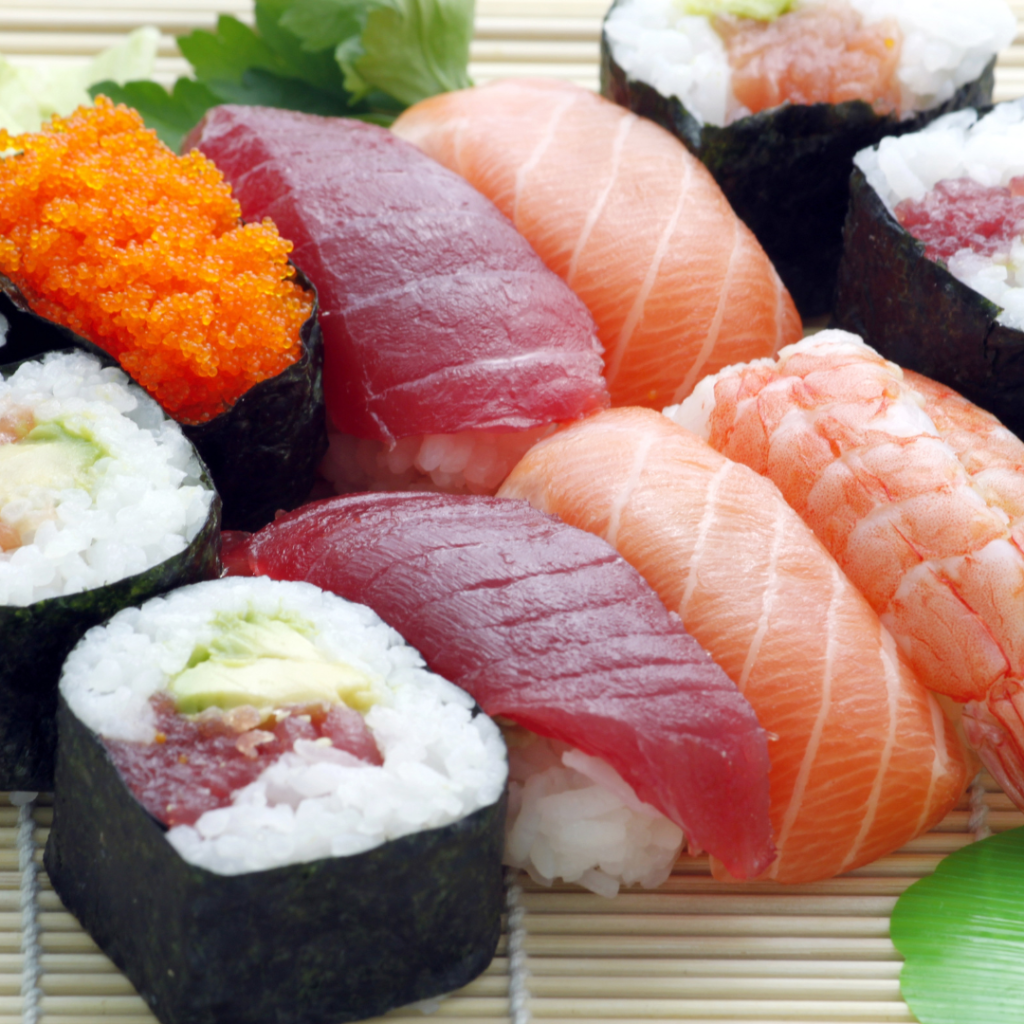If you’re a food enthusiast or just someone curious about different cultures, Japanese cuisine, which you can enjoy at Ginza St James, is undoubtedly a fascinating topic. Known for its exquisite taste, presentation, and cultural significance, Japanese food offers a unique culinary experience.
1. The Art of Sushi
Sushi is perhaps the most famous Japanese dish globally. But there’s more to sushi than meets the eye. Sushi is an art form, with chefs dedicating years to perfecting their craft. Traditional sushi involves vinegared rice combined with various ingredients such as raw fish, vegetables, and occasionally tropical fruits. The balance of flavors and the fresh ingredients are crucial to this delicacy.
- Nigiri Sushi : Hand-pressed sushi rice topped with a slice of raw fish or seafood.
- Maki Sushi : Rice and fillings rolled in seaweed and sliced into bite-sized pieces.
- Sashimi : Thinly sliced raw fish served without rice.
- Temaki : Hand-rolled cones of seaweed filled with rice, fish, and vegetables.
- Uramaki : Inside-out rolls where the rice is on the outside, and seaweed wraps around the filling.
2. The Importance of Rice
Rice is a staple in Japanese cuisine, and its significance extends beyond just a side dish. Japanese rice, known as “gohan,” is sticky and short-grain, making it perfect for sushi. It’s also served alongside almost every meal, emphasizing its importance in the diet.
Cultural Significance of Rice
The Japanese word for cooked rice, “gohan,” also means “meal,” underscoring its central role in the diet. Traditionally, rice was even used as currency, highlighting its value in Japanese society.
Rice in Daily Meals
A typical Japanese meal often includes a bowl of rice, miso soup, pickled vegetables, and a main dish such as fish or meat. Rice is also the main ingredient in dishes like donburi (rice bowls), onigiri (rice balls), and mochi (rice cakes).
3. Diverse Noodles Varieties
Noodles are another cornerstone of Japanese cuisine. From ramen to soba, each type of noodle has its unique characteristics and cultural significance.
Types of Japanese Noodles
Ramen
Ramen, a beloved comfort food, consists of Chinese-style wheat noodles served in a meat or fish-based broth, often flavored with soy sauce or miso, and topped with ingredients like sliced pork, nori, and scallions. Each region in Japan has its own take on ramen, making it a diverse and exciting dish.
Soba
Soba noodles, made from buckwheat flour, are known for their nutty flavor and are served either chilled with a dipping sauce or in a hot broth. They are considered a healthy option due to their nutritional content and lower calorie count compared to other noodles.
Udon
Udon noodles are thick, chewy, and made from wheat flour. They are typically served in a hot broth but can also be enjoyed cold. Udon dishes are simple yet comforting, often garnished with tempura, fish cake, or vegetables.
4. The Ritual of Tea
Tea, particularly green tea, plays a significant role in Japanese culture. The Japanese tea ceremony, or “chanoyu,” is a traditional ritual influenced by Zen Buddhism, emphasizing the art of preparing and drinking matcha (powdered green tea).
Types of Japanese Tea
- Matcha : Powdered green tea used in tea ceremonies and for making desserts.
- Sencha : The most commonly consumed green tea in Japan, enjoyed for its refreshing taste.
- Hojicha : Roasted green tea with a distinct, nutty flavor.
- Genmaicha : Green tea combined with roasted brown rice, offering a unique, toasty flavor.
5. Seasonal and Regional Variations
Japanese cuisine is deeply rooted in the concept of seasonality, known as “shun.” This means using ingredients at their peak freshness to enhance the flavors and nutritional value of dishes.
Seasonal Delicacies
Each season in Japan brings its own set of culinary delights. For instance, spring is the season for sakura (cherry blossoms) and bamboo shoots, while autumn features dishes with chestnuts and mushrooms. Seasonal foods are celebrated through various festivals and traditions.
Regional Specialties
Japan’s diverse geography contributes to regional variations in cuisine. For example, Osaka is famous for its street food like takoyaki (octopus balls) and okonomiyaki (savory pancakes), while Hokkaido is known for its seafood, including fresh crab and salmon.
6. Umami – The Fifth Taste
Umami, often described as a savory or meaty taste, is a fundamental aspect of Japanese cuisine. Discovered by Japanese scientist Kikunae Ikeda in 1908, umami is now recognized as the fifth basic taste, alongside sweet, sour, salty, and bitter.
Sources of Umami
Common sources of umami in Japanese food include dashi (a broth made from kombu seaweed and bonito flakes), soy sauce, miso, and mushrooms.
Enhancing Dishes with Umami
Incorporating umami-rich ingredients into cooking can elevate even the simplest dishes. For example, adding a splash of soy sauce or a spoonful of miso paste can transform a basic soup or stir-fry into a flavorful and complex meal.
7. The Art of Presentation
In Japanese cuisine, how a dish looks is almost as important as how it tastes. The presentation of food is considered an art form, with chefs paying meticulous attention to color, texture, and arrangement.
Aesthetic Principles
Japanese food presentation often follows the principles of balance and harmony. This includes using seasonal ingredients, arranging them to look natural and inviting, and using appropriate dishes and garnishes.
Kaiseki
Kaiseki is a traditional multi-course meal that showcases the chef’s skills in preparation and presentation. Each course is carefully crafted to highlight the natural flavors and beauty of the ingredients, creating a dining experience that is both visually and gastronomically pleasing.
8. Japanese Sweets and Desserts
Japanese sweets, known as “wagashi,” are often enjoyed with tea and are crafted to reflect the seasons and the natural world.
Popular Japanese Desserts
Mochi
Mochi, a chewy rice cake, comes in various forms and flavors. It can be plain, filled with sweet red bean paste, or even used as a topping for ice cream.
Dorayaki
Dorayaki consists of two fluffy pancakes sandwiched with a sweet filling, typically red bean paste. It’s a popular snack enjoyed by people of all ages.
Matcha Desserts
Matcha-flavored sweets, including cakes, cookies, and ice cream, are beloved for their unique taste and vibrant green color.
A Culinary Adventure Awaits
Japanese cuisine offers a rich tapestry of flavors, traditions, and culinary techniques. Embrace the culinary adventure that awaits you in the world of Japanese cuisine.

